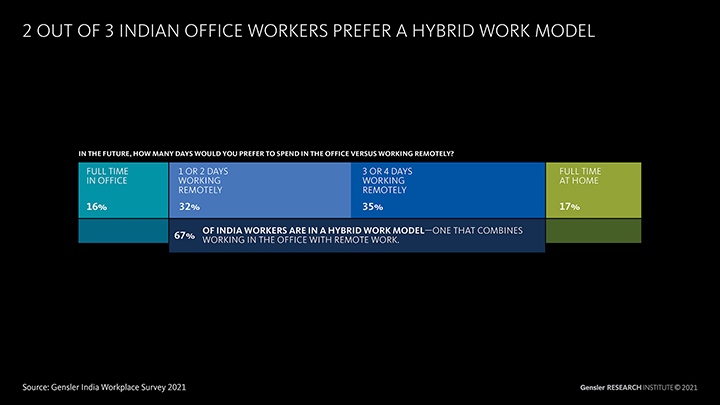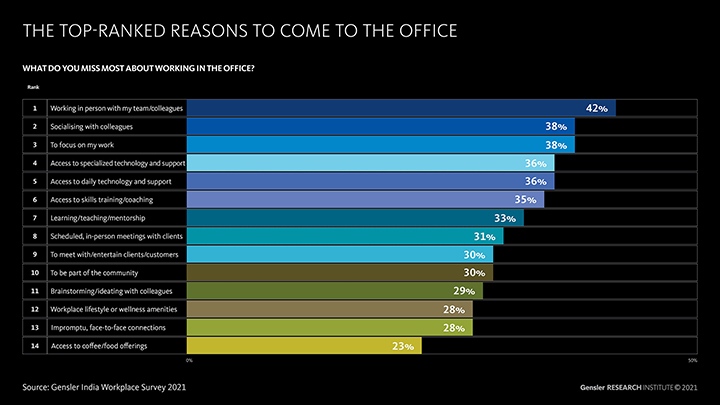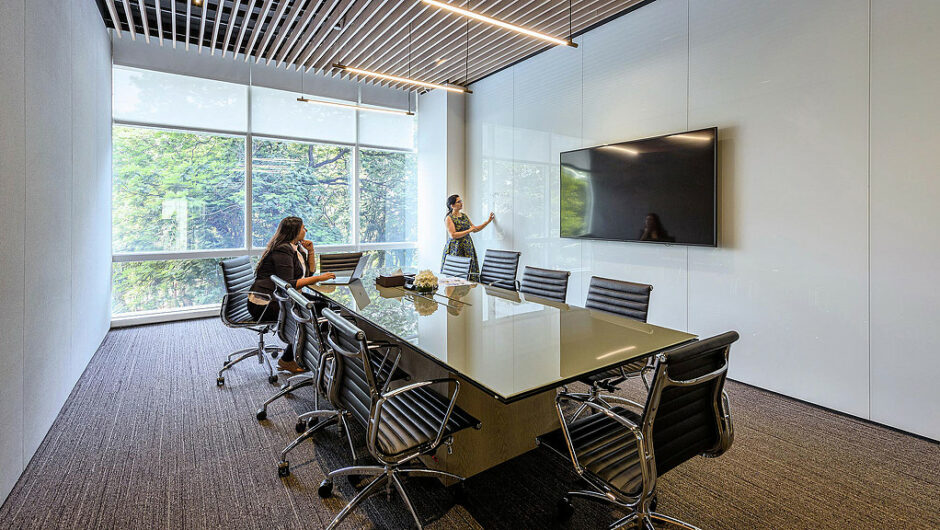COVID-19’s second wave had devastating impacts across India. As the country sets on a path toward stabilization, with new infections dropping and vaccination rates rising, many companies are implementing or forecasting return to work plans for their employees. Gensler’s India Return to Work Survey 2021 reveals insights on India’s return to the office, informed by responses from 2,500 office workers. Our data shows that workers in India are embracing a hybrid work model — but they face unique challenges and opportunities. Many of these findings have implications for office workers in other countries across the globe.
Gensler’s India Workplace Survey 2021 illustrates the most salient points currently impacting workplaces. Here’s a quick overview of these findings:
- Most companies are looking to implement some form of hybrid working policy, with employees coming into the office for an average of 2-4 days.
- The core purpose of the workplace is shifting — team collaboration and enabled communities are on the rise.
- Employees need the workplace for connecting with people, but they also want access to technology that isn’t available at home.
In a post-COVID world, employers must provide a workplace experience that supports significant changes to operations policy. As we move toward a “hybrid future,” or the integration of in-person and remote work, the office is becoming an even more important tool for attracting and retaining talent. Transcending all company roles, office environments have the ability to convey distinct company culture and values in a way that remote work cannot.

India is a high-growth market for many companies looking to consolidate back-end development and support teams. While many companies have recently expanded their footprint to house these operations, these new spaces may not be fit for hybrid working. Many companies will need to “rebalance” rather than “rebuild” the workplace — they should strive to create a rebalanced workplace that swaps out the dense environments dominated by individual working spaces, such as workstations, with a more dynamic and collaborative workplace encouraging choice, autonomy, and connections.

When refurbishing or redesigning the workplace, it’s vital to think beyond just physical space. What’s perhaps even more significant are the policy and operational changes that impact employee behaviors. Here are four tactical interventions to inform the future workplace:
1. Strategy and Programming: We must first forecast what needs to change. Employee demands are evolving, and a holistic approach may help employers align flexible space strategies with the desired company culture and future employee expectations.
2. Design: Next, we implement that strategy with a research-based approach that focuses on the employee experience and reconsiders traditional design processes. We know the usual tight constraints — budget, time, and design changes — but a novel process may forgo aesthetic interventions to embrace the experiential side of implemented design. People are the centerpiece of this approach. Creating a great human experience should be a design priority.
3. Brand Design, Environmental Graphic Design (EGD): When we do turn our focus to the “look and feel” of space, it should be to tell impactful stories. The workplace is becoming even more of an employee engagement tool, and companies should use it to tell deep and inspiring stories that communicate their values and mission to their people.
4. Change Management: People must be on board with change. Employers need to employ a clear communications strategy that informs employees at every phase of change to policies and protocols. Ultimately, company culture is at stake — an employee’s day-to-day work life is heavily impacted by change, so it is critical that they feel as if changes are “ground-up” rather than “top down.” In fact, companies report that the required intervention projects are 20% space change and 80% behavior change.
By leveraging our expertise in all four of these areas, we can provide holistic solutions for space interventions and to create transformative experiences that can ease transitions into companies’ back to office programs. Companies in India are excited about the future and what it holds for their business, and we are focused on providing environments and experiences that help realize these aspirations.
Editor’s note: this article originally appeared on gensler.com


